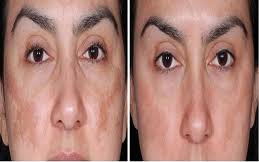Understanding Melasma and Its Effects
Melasma is a common skin condition that causes brown or gray-brown patches on the skin, mainly on the face. It often affects women more than men and is especially common during hormonal changes like pregnancy or birth control usage. While not harmful physically, melasma can cause emotional stress due to its appearance.
-
Appears mostly on cheeks, forehead, nose, and chin
-
Often triggered by hormonal changes and sun exposure
-
Can become darker over time without treatment
-
Requires consistent skincare and sun protection
Why Choose Melasma Treatment in Islamabad?
Choosing Melasma Treatment in Islamabad ensures that you get access to some of the most experienced dermatologists and high-end aesthetic clinics in Pakistan. The city is known for offering advanced treatment options tailored for Asian skin tones.
-
Clinics offer international standard care
-
Specialized treatments for sensitive and melanin-rich skin
-
Affordable packages with visible results
-
Personalised consultations for long-lasting outcomes
Main Causes of Melasma
Identifying the cause of melasma is critical before starting any treatment. It helps in choosing the right plan for quicker and more effective results.
Common Triggers Include:
-
Hormonal changes: Pregnancy (also known as “pregnancy mask”), birth control pills
-
Sun exposure: UV rays stimulate excess melanin production
-
Genetics: A family history can increase your chances
-
Skincare products: Harsh products may irritate and darken skin
-
Medications: Some drugs cause skin to become photosensitive
Top Treatment Options Available in Islamabad
Islamabad’s skincare clinics offer a range of modern treatments that help reduce melasma pigmentation and restore even skin tone.
1. Topical Creams and Medical Serums
Topical treatments are usually the first step and include:
-
Hydroquinone: The most common pigment-lightening agent
-
Retinoids: Encourage skin cell turnover
-
Vitamin C and Niacinamide: Antioxidants that reduce pigmentation
-
Tranexamic Acid: Effective for hormonal pigmentation
These are often prescribed for daily home use to gradually lighten dark spots.
2. Chemical Peels
Chemical peels use safe exfoliating acids to remove the top layers of pigmented skin.
-
Glycolic acid, salicylic acid, and lactic acid peels are common
-
Help reduce uneven skin tone
-
Can be done in multiple sessions
-
Minimal downtime with visible improvement
3. Laser and Light-Based Therapies
For deeper or stubborn melasma, laser treatments are highly effective and safe when performed by qualified experts.
-
Q-switched Nd:YAG laser: Breaks down melanin pigments
-
Fractional CO2 laser: Targets deeper skin layers and boosts collagen
-
IPL (Intense Pulsed Light): Helps with surface-level pigmentation
Important: Laser therapy must be followed by strong sun protection to prevent recurrence.
4. Microneedling and PRP
Microneedling combined with Platelet-Rich Plasma (PRP) therapy helps in cell regeneration and improves skin texture.
-
Enhances absorption of lightening serums
-
Boosts skin healing and collagen production
-
Ideal for people with uneven skin tone and resistant melasma
What to Expect During and After Treatment
Treating melasma is a journey that requires consistency and patience. Results may take several weeks to show, depending on the type and depth of pigmentation.
-
Expect 4–8 sessions for noticeable results
-
Mild redness or peeling may occur temporarily
-
Daily use of sunscreen (SPF 50+) is mandatory
-
Maintenance treatments are often recommended
Who Should Consider Melasma Treatment?
Anyone with persistent dark patches on the skin—especially women facing hormonal changes—should seek professional help for melasma.
You’re a good candidate if:
-
You have brown or grey-brown facial patches
-
You’ve tried home remedies without success
-
Your pigmentation worsens with sun exposure
-
You’re committed to sun protection and follow-up care
Tips to Prevent Melasma from Returning
Even after successful treatment, maintenance is key to preventing recurrence.
-
Apply broad-spectrum sunscreen every 2 hours when outdoors
-
Avoid peak sun hours (10 am – 4 pm)
-
Use gentle skincare products without irritants
-
Wear wide-brimmed hats and sunglasses outside
-
Regular follow-up sessions with your dermatologist
Conclusion
Melasma may be persistent, but it’s no longer untreatable. With modern advancements and skilled dermatologists, Melasma Treatment in Islamabad has become both safe and effective. Whether you choose topical creams, chemical peels, or high-end laser therapy, the key lies in consistency, expert guidance, and ongoing skincare.
If you’re ready to transform your skin and boost your confidence, consult a reputable clinic in Islamabad today and take the first step toward flawless, radiant skin.
